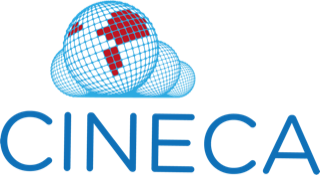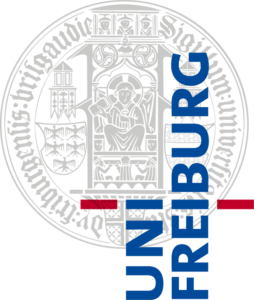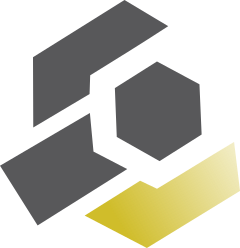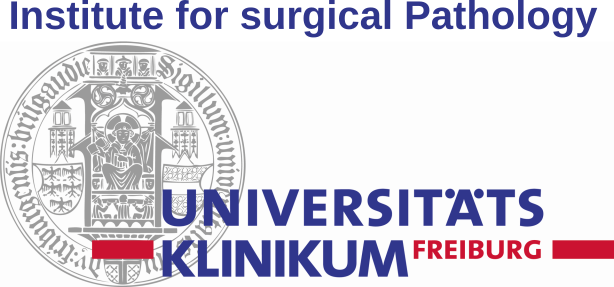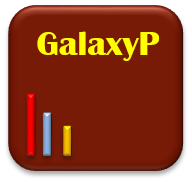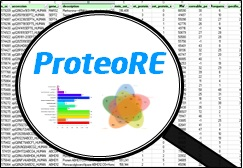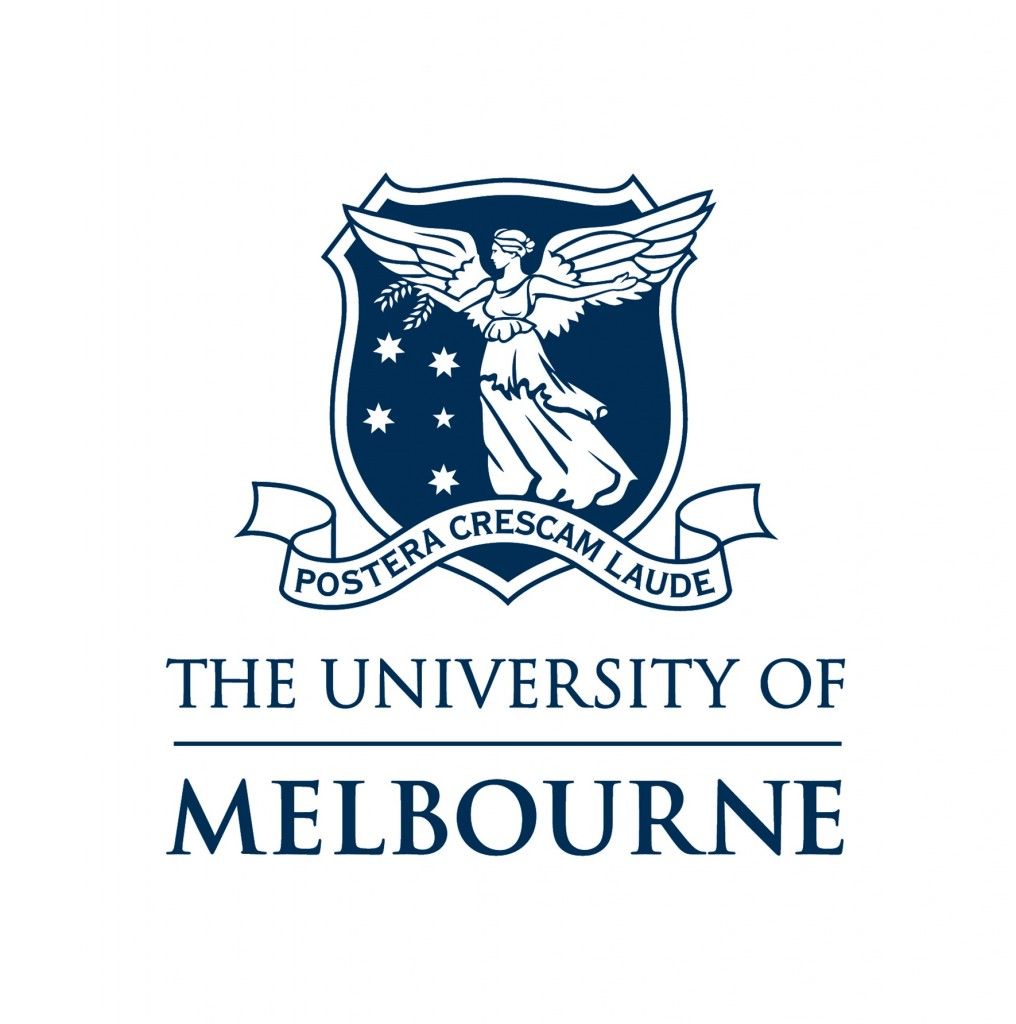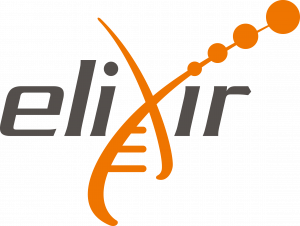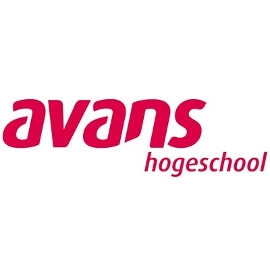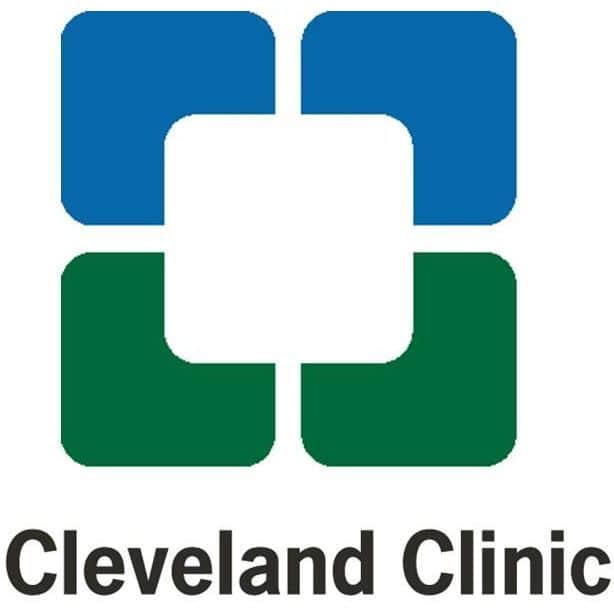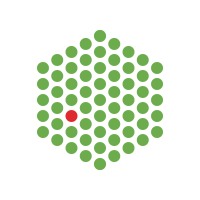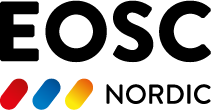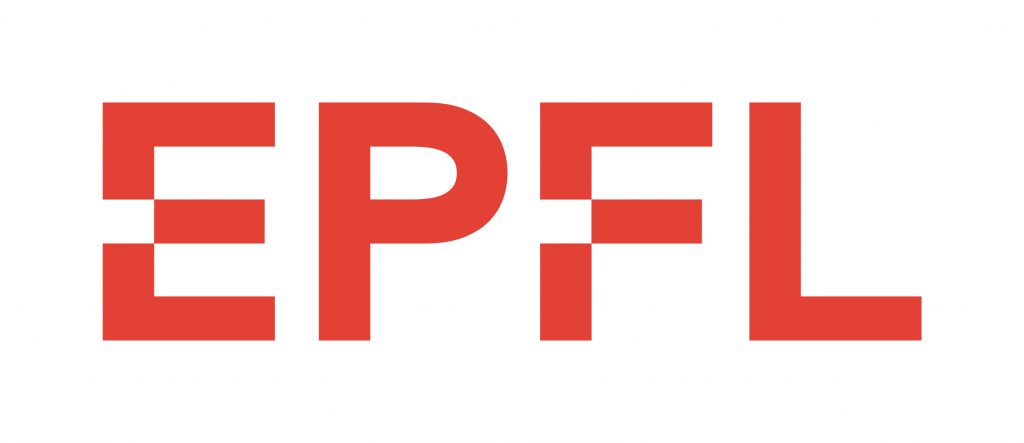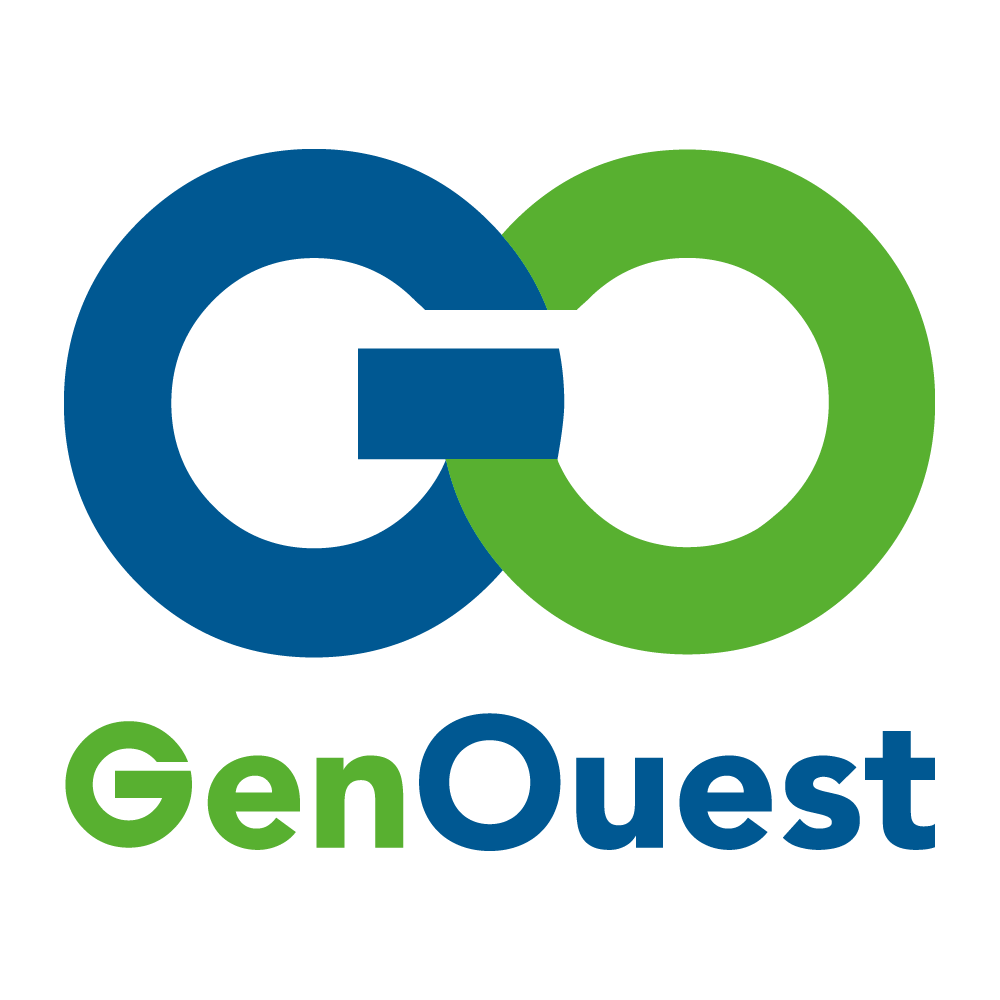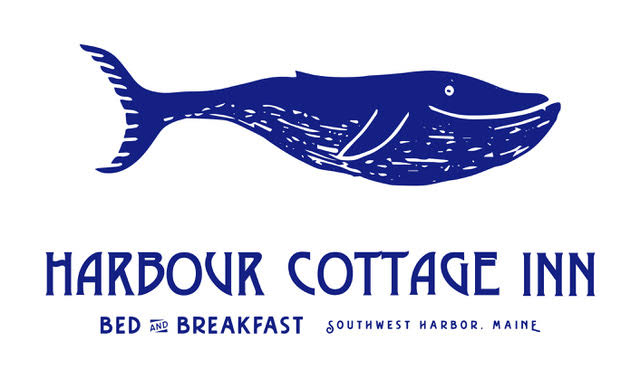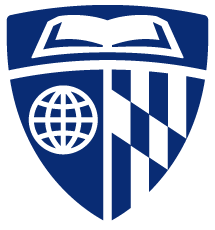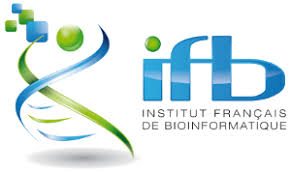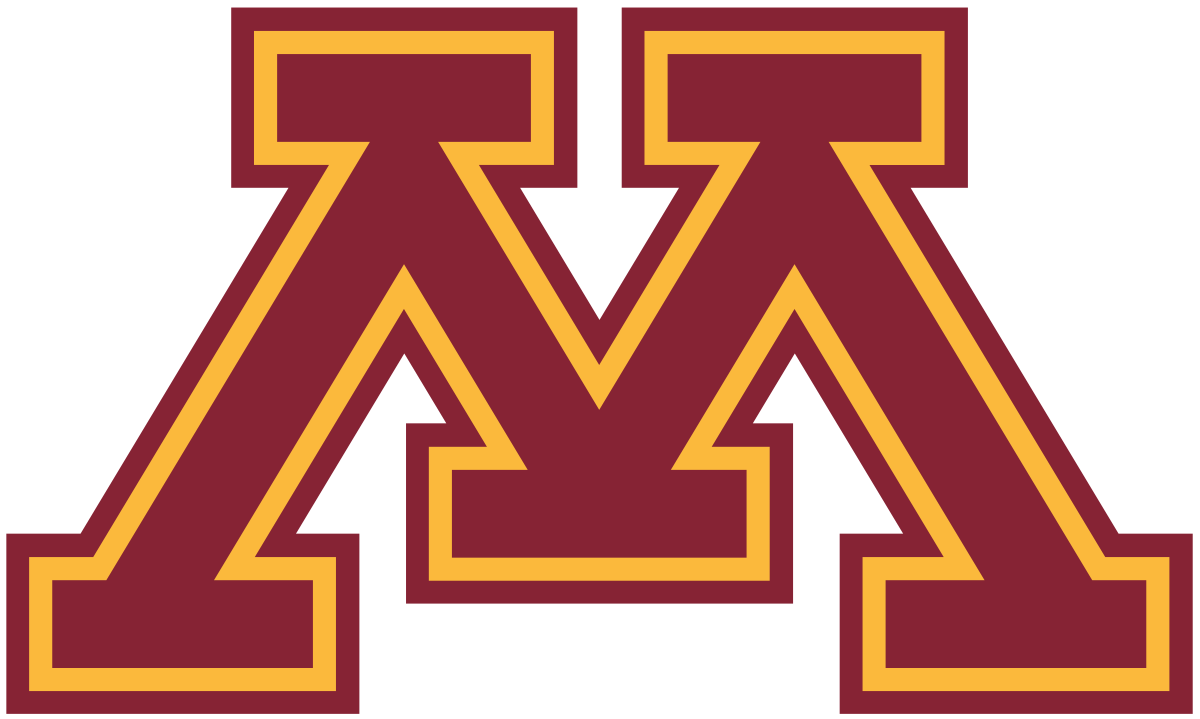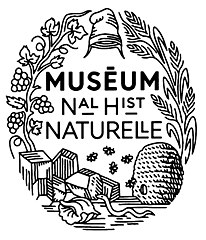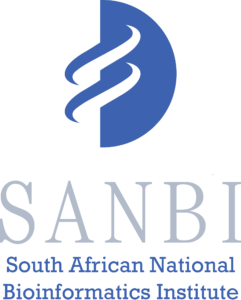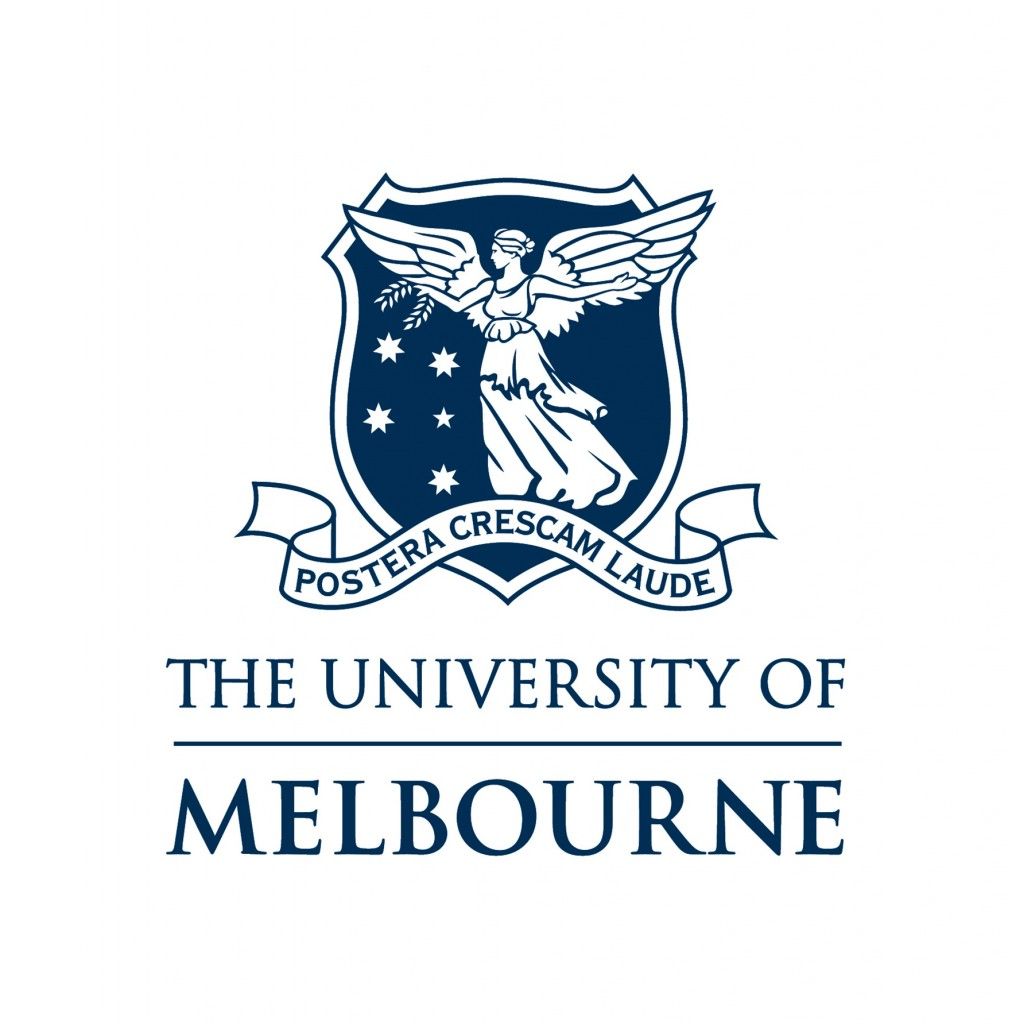Let's get Started!
Welcome everybody, and thank you for joining this course!
Everything you need for this course can be found on this webpage. More information including links to all training materials can be found by clicking on each session
Note: Problems viewing this page? Try the simple view instead.
Note: The deadline for requesting certificates has passed, but we will organize similar events in the future. The next major training event will happen during the 2021 Galaxy Community Conference, and includes a week-long training event similar to this one (preliminary program). Please consider joining!
Note: Slack will not be as active anymore, but you can also ask your quesions on Gitter.
Welcome & Practical Information
Video Lecture
Subtitles By: Saskia Hiltemann
Description: Start here; we will go over all the important things to know to get the most out of this workshop
Supporting Materials
- Slides: Welcome & Course Information
- Video: Watch it on YouTube
- FAQ Document - Have a question about this training? Check here to see if it has already been answered
- Ask an instructor - Have question about the training? Did you run into a problem? Just wanna chat? Ask away on Slack! (Channel: #general )
- Finished the session? - Let us know that you've finished it, and what you thought of it! On Slack: (Channel: #general ). Thanks!
- Enjoyed it? - Like the video on YouTube, Tweet, and follow the GTN on Twitter! @gxytraining
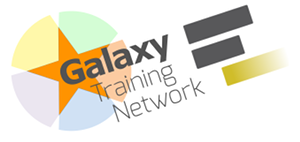
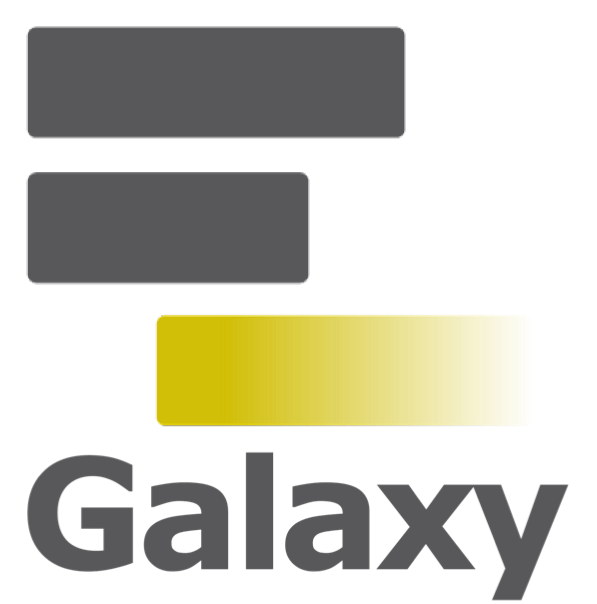
Register for a Galaxy Account
Create an account on one of the following Galaxy servers:
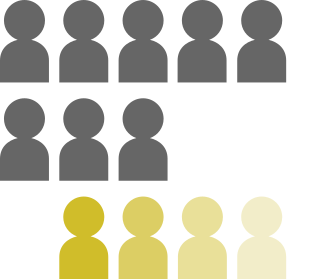
Sign up for TIaaS
Training Infrastructure as a Service (TIaaS) helps Galaxy workshops run smoothly.
The procedure for this is different depending on the server you are on:

Join Slack Chat!
Slack is where you can ask all your questions
Video Tutorial
Subtitles By: Saskia Hiltemann
Description: This short video gives an overview of the worldwide Galaxy community, and different ways you can get involved! Video created by Beatriz Serrano-Solano.
Supporting Materials
- GalaxyProject Home: galaxyproject.org
- Galaxy servers: Find a Galaxy server near you!
- Galaxy Training Network: Start learning Galaxy
- Support: Galaxy Help Forum
- Galaxy Publications: Zotero
- Galaxy Communities: Find and Join a community
- Events: Galaxy Event Horizon
- Mailing Lists: Stay informed of Galaxy activity!
- Galaxy Working Groups: Find and join a WG
- GitHub: galaxyproject
- Gitter Chat: Start talking with the Galaxy Community!
- GTN Gitter: Join the training discussion here!
- PaperCuts: Monthly Collaboration Fest
- GTN CoFest: Everybody Welcome!
- Twitter: follow @galaxyproject
- Twitter: follow the GTN @gxytraining
- Video: Watch it on YouTube
- Ask an instructor - Have question about the training? Did you run into a problem? Just wanna chat? Ask away on Slack!
- Finished the session? - Let us know that you've finished it, and what you thought of it! On Slack: . Thanks!
- Enjoyed it? - Like the video on YouTube, Tweet, and follow the GTN on Twitter! @gxytraining

Day 1: Introduction to Galaxy and NGS analysis
Today we start by introducing the Galaxy Platform, and show you how to analyze your NGS data using Galaxy. Today we have a mixture of lecutres, demos, and hands-on tutorials.
Come say Hi in Slack! Let us know you are joining today and are getting started!

Icebreaker
Introduce yourself, tell us where you're joining from, and one thing about your surroundings (e.g. it's snowing outside, there's a squirrel on my porch, my cat is on my keyboard)
Post your answers in #social on Slack!
And of course please feel free to respond to anybody here, this channel is for socializing and getting to know each other :)
Note: Please do this every day if you would like to receive a certificate of attendance
Video Lecture/Demo
Subtitles By: Anton Nekrutenko
Description: This video will introduce the Galaxy data analysis platform, and give a short demo on how to use it.
Supporting Materials
- Slides: A Slightly Longer Introduction to Galaxy
- Video: Watch it on YouTube
- FAQ Document - Have a question about this training? Check here to see if it has already been answered
- Ask an instructor - Have question about the training? Did you run into a problem? Just wanna chat? Ask away on Slack! (Channel: #1-1_galaxy-intro )
- Finished the session? - Let us know that you've finished it, and what you thought of it! On Slack: (Channel: #1-1_galaxy-intro ). Thanks!
- Enjoyed it? - Like the video on YouTube, Tweet, and follow the GTN on Twitter! @gxytraining

Video Tutorial
Subtitles By: Dave Clements
Description: In this tutorial, we will walk you through your first (toy) analysis in Galaxy. This tutorial is aimed at familiarizing you with the Galaxy platform, and some basic NGS concepts.
Supported Servers
Supporting Materials
- Slides: Overview Prsentations
- Tutorial: Introduction to Genomics and Galaxy
- Tutorial: Extracting Workflows from Histories
- Video: Watch it on YouTube
- FAQ Document - Have a question about this training? Check here to see if it has already been answered
- Ask an instructor - Have question about the training? Did you run into a problem? Just wanna chat? Ask away on Slack! (Channel: #1-1_galaxy-intro )
- Finished the session? - Let us know that you've finished it, and what you thought of it! On Slack: (Channel: #1-1_galaxy-intro ). Thanks!
- Enjoyed it? - Like the video on YouTube, Tweet, and follow the GTN on Twitter! @gxytraining

Video Demo
Subtitles By: Anton Nekrutenko
Description: In this demo video, we will show how to perform an NGS data analysis, using a SARS-CoV-2 example dataset. If you would like to run the full tutorial yourself, please find the link below (duration 1h-1.5h).
Supported Servers
Supporting Materials
- Tutorial: Demo: NGS Data Logistics using SARS-CoV-2 data
- Video: Watch it on YouTube
- FAQ Document - Have a question about this training? Check here to see if it has already been answered
- Ask an instructor - Have question about the training? Did you run into a problem? Just wanna chat? Ask away on Slack! (Channel: #1-2_ngs-intro )
- Finished the session? - Let us know that you've finished it, and what you thought of it! On Slack: (Channel: #1-2_ngs-intro ). Thanks!
- Enjoyed it? - Like the video on YouTube, Tweet, and follow the GTN on Twitter! @gxytraining

Video Lecture
Subtitles By: Yvonne Hiltemann, Nadia Goué, Helena Rasche
Description: This tutorial covers the basics about how to assess and improve the quality of your sequencing data.
Supporting Materials
- Slides: Introduction to Quality Control
- Video: Watch it on YouTube
- FAQ Document - Have a question about this training? Check here to see if it has already been answered
- Ask an instructor - Have question about the training? Did you run into a problem? Just wanna chat? Ask away on Slack! (Channel: #1-3_quality-control )
- Finished the session? - Let us know that you've finished it, and what you thought of it! On Slack: (Channel: #1-3_quality-control ). Thanks!
- Enjoyed it? - Like the video on YouTube, Tweet, and follow the GTN on Twitter! @gxytraining

Video Tutorial
Subtitles By: Bérénice Batut, Nadia Goué, Saskia Hiltemann
Description: Get hands-on experience assessing and improving the quality of your sequencing data in Galaxy.
Supported Servers
Supporting Materials
- Tutorial: Quality Control: Hands-on!
- Video: Watch it on YouTube
- FAQ Document - Have a question about this training? Check here to see if it has already been answered
- Ask an instructor - Have question about the training? Did you run into a problem? Just wanna chat? Ask away on Slack! (Channel: #1-3_quality-control )
- Finished the session? - Let us know that you've finished it, and what you thought of it! On Slack: (Channel: #1-3_quality-control ). Thanks!
- Enjoyed it? - Like the video on YouTube, Tweet, and follow the GTN on Twitter! @gxytraining

Video Lecture
Subtitles By: Daniel Blankenberg
Description: Mapping sequencing reads to a reference genome is often the next step after QC. This session covers the basic concepts of mapping.
Supporting Materials
- Slides: Mapping
- Video: Watch it on YouTube
- FAQ Document - Have a question about this training? Check here to see if it has already been answered
- Ask an instructor - Have question about the training? Did you run into a problem? Just wanna chat? Ask away on Slack! (Channel: #1-4_mapping )
- Finished the session? - Let us know that you've finished it, and what you thought of it! On Slack: (Channel: #1-4_mapping ). Thanks!
- Enjoyed it? - Like the video on YouTube, Tweet, and follow the GTN on Twitter! @gxytraining

Video Tutorial
Subtitles By: Saskia Hiltemann
Description: In this tutorial you will map sequencing data to a reference genome, and explore the mapped reads in a genome browser.
Supported Servers
Supporting Materials
- Tutorial: Mapping
- Video: Watch it on YouTube
- FAQ Document - Have a question about this training? Check here to see if it has already been answered
- Ask an instructor - Have question about the training? Did you run into a problem? Just wanna chat? Ask away on Slack! (Channel: #1-4_mapping )
- Finished the session? - Let us know that you've finished it, and what you thought of it! On Slack: (Channel: #1-4_mapping ). Thanks!
- Enjoyed it? - Like the video on YouTube, Tweet, and follow the GTN on Twitter! @gxytraining

Video Lecture
Subtitles By: Saskia Hiltemann, Helena Rasche
Description: When there is no reference genome available for your organism, you will have to assemble the short reads into larger segments (contigs). This introduction covers the basics of this assembly process.
Supporting Materials
- Slides: An Introduction to Genome Assembly
- Video: Watch it on YouTube
- FAQ Document - Have a question about this training? Check here to see if it has already been answered
- Ask an instructor - Have question about the training? Did you run into a problem? Just wanna chat? Ask away on Slack! (Channel: #1-5_assembly )
- Finished the session? - Let us know that you've finished it, and what you thought of it! On Slack: (Channel: #1-5_assembly ). Thanks!
- Enjoyed it? - Like the video on YouTube, Tweet, and follow the GTN on Twitter! @gxytraining

Video Tutorial
Subtitles By: Anna Syme
Description: In this tutorial, you will assemble a chloroplast genome using a combination of short and long read data.
Supported Servers
Supporting Materials
- Tutorial: Chloroplast genome assembly
- Video: Watch it on YouTube
- FAQ Document - Have a question about this training? Check here to see if it has already been answered
- Ask an instructor - Have question about the training? Did you run into a problem? Just wanna chat? Ask away on Slack! (Channel: #1-5_assembly )
- Finished the session? - Let us know that you've finished it, and what you thought of it! On Slack: (Channel: #1-5_assembly ). Thanks!
- Enjoyed it? - Like the video on YouTube, Tweet, and follow the GTN on Twitter! @gxytraining


Give us Feedback
Let us know what you thought about today!
What did you like? Suggestions for improvements? Spot a typo? Tell us about it!
- About the Materials? (slides, training manuals) use the feedback forms at the end of the tutorial
- About other things? - Let us know in Slack (channel #feedback )

Socialize with each other!
Join one of the social sessions
These include games, quizzes, discussions and more
Check out all channels in Slack starting with #social-
Want to organize something yourself? Tell us your idea and we will make a channel for it!

Meet the Galaxy Community!
Enjoying the course so far? Learn more about the Global Galaxy Community and how YOU can become part of it, by watching this video!
Day 2: Introduction to RNA-Seq analysis with Galaxy and R
Today we dive into (bulk) RNA-seq analysis. We will walk you through an end-to-end analysis and Galaxy, and show you how to perform downstream analysis on the results using Rstudio in Galaxy.
Come say Hi in Slack! Let us know you are joining today and are getting started!

Icebreaker
Share with us how your 5-year-old self would have finished this sentence: 'When I grow up, I want to be ...' (and what you are actually doing now that you're grown up)
Post your answers in #social on Slack!
And of course please feel free to respond to anybody here, this channel is for socializing and getting to know each other :)
Note: Please do this every day if you would like to receive a certificate of attendance
Video Lecture
Subtitles By: Nadia Goué, Saskia Hiltemann
Description: RNA sequencing is used to assess the expression levels of genes. This video introduces the important concepts related to RNA-seq analysis.
Supporting Materials
- Slides: Introduction to Transcriptomics
- Video: Watch it on YouTube
- FAQ Document - Have a question about this training? Check here to see if it has already been answered
- Ask an instructor - Have question about the training? Did you run into a problem? Just wanna chat? Ask away on Slack! (Channel: #2-1_ref-based-rna-seq )
- Finished the session? - Let us know that you've finished it, and what you thought of it! On Slack: (Channel: #2-1_ref-based-rna-seq ). Thanks!
- Enjoyed it? - Like the video on YouTube, Tweet, and follow the GTN on Twitter! @gxytraining

Video Tutorial
Subtitles By: Helena Rasche, Saskia Hiltemann
Description: In this tutorial we will walk you through the process of an RNA-seq analysis, comparing gene expression levels between different conditions and assessing impacted gene pathways.
Supported Servers
Supporting Materials
- Tutorial: Reference-based RNA-Seq data analysis
- Video: Watch it on YouTube
- FAQ Document - Have a question about this training? Check here to see if it has already been answered
- Ask an instructor - Have question about the training? Did you run into a problem? Just wanna chat? Ask away on Slack! (Channel: #2-1_ref-based-rna-seq )
- Finished the session? - Let us know that you've finished it, and what you thought of it! On Slack: (Channel: #2-1_ref-based-rna-seq ). Thanks!
- Enjoyed it? - Like the video on YouTube, Tweet, and follow the GTN on Twitter! @gxytraining

Video Demo
Subtitles By: Saskia Hiltemann
Description: This tutorial will show you how you can start Rstudio from within Galaxy. This option is only available on Galaxy EU for the time being. If you are working on a different Galaxy server, you can use Rstudio Cloud (https://rstudio.cloud/)
Supporting Materials
- Video: Watch it on YouTube
- FAQ Document - Have a question about this training? Check here to see if it has already been answered
- Ask an instructor - Have question about the training? Did you run into a problem? Just wanna chat? Ask away on Slack! (Channel: #2-2_intro-to-r )
- Finished the session? - Let us know that you've finished it, and what you thought of it! On Slack: (Channel: #2-2_intro-to-r ). Thanks!
- Enjoyed it? - Like the video on YouTube, Tweet, and follow the GTN on Twitter! @gxytraining

Video Tutorial
Subtitles By: Sébastien Fouilloux, Anne Fouilloux, Kaivan Kamali
Description: This tutorial will provide an introduction to using R with Rstudio in Galaxy.
Supported Servers
Supporting Materials
- Tutorial: R basics in Galaxy
- Video: Watch it on YouTube
- FAQ Document - Have a question about this training? Check here to see if it has already been answered
- Ask an instructor - Have question about the training? Did you run into a problem? Just wanna chat? Ask away on Slack! (Channel: #2-2_intro-to-r )
- Finished the session? - Let us know that you've finished it, and what you thought of it! On Slack: (Channel: #2-2_intro-to-r ). Thanks!
- Enjoyed it? - Like the video on YouTube, Tweet, and follow the GTN on Twitter! @gxytraining

Video Tutorial
Subtitles By: Keith Suderman, Nadia Goué
Description: An advanced tutorial covering downstream analysis of RNA-seq data using R.
Supported Servers
Supporting Materials
- Tutorial: Advanced R in Galaxy
- Video: Watch it on YouTube
- FAQ Document - Have a question about this training? Check here to see if it has already been answered
- Ask an instructor - Have question about the training? Did you run into a problem? Just wanna chat? Ask away on Slack! (Channel: #2-3_advanced_r )
- Finished the session? - Let us know that you've finished it, and what you thought of it! On Slack: (Channel: #2-3_advanced_r ). Thanks!
- Enjoyed it? - Like the video on YouTube, Tweet, and follow the GTN on Twitter! @gxytraining

Video Tutorial
Subtitles By: Helena Rasche, Saskia Hiltemann, Fotis E. Psomopoulos
Description: In this tutorial, we will visualize our RNA-seq analysis results using R.
Supported Servers
Supporting Materials
- Tutorial: RNA Seq Counts to Viz in R
- Video: Watch it on YouTube
- FAQ Document - Have a question about this training? Check here to see if it has already been answered
- Ask an instructor - Have question about the training? Did you run into a problem? Just wanna chat? Ask away on Slack! (Channel: #2-4_visualisation-with-r )
- Finished the session? - Let us know that you've finished it, and what you thought of it! On Slack: (Channel: #2-4_visualisation-with-r ). Thanks!
- Enjoyed it? - Like the video on YouTube, Tweet, and follow the GTN on Twitter! @gxytraining


Give us Feedback
Let us know what you thought about today!
What did you like? Suggestions for improvements? Spot a typo? Tell us about it!
- About the Materials? (slides, training manuals) use the feedback forms at the end of the tutorial
- About other things? - Let us know in Slack (channel #feedback )

Socialize with each other!
Join one of the social sessions
These include games, quizzes, discussions and more
Check out all channels in Slack starting with #social-
Want to organize something yourself? Tell us your idea and we will make a channel for it!

Meet the Galaxy Community!
Enjoying the course so far? Learn more about the Global Galaxy Community and how YOU can become part of it, by watching this video!
Day 3: Single-cell RNA-Seq Analysis
Today's videos provide a short demo of the analysis, please work through the tutorials on your own first to get all the details and background information, and refer to the videos if you get stuck.
Come say Hi in Slack! Let us know you are joining today and are getting started!

Icebreaker
Share with us your favorite dish (food or drink) bonus points for recipes! ;)
Post your answers in #social on Slack!
And of course please feel free to respond to anybody here, this channel is for socializing and getting to know each other :)
Note: Please do this every day if you would like to receive a certificate of attendance
Video Lecture
Subtitles By: Mehmet Tekman
Description: Single-cell RNA-seq analysis is a rapidly evolving field at the forefront of transcriptomic research, used in high-throughput developmental studies and rare transcript studies to examine cell heterogeneity within a populations of cells. The cellular resolution and genome wide scope make it possible to draw new conclusions that are not otherwise possible with bulk RNA-seq. Slides created by Mehmet Tekman.
Supporting Materials
- Slides: An introduction to scRNA-Seq data analysis
- Video: Watch it on YouTube
- FAQ Document - Have a question about this training? Check here to see if it has already been answered
- Ask an instructor - Have question about the training? Did you run into a problem? Just wanna chat? Ask away on Slack! (Channel: #3-0_single-cell-rnaseq )
- Finished the session? - Let us know that you've finished it, and what you thought of it! On Slack: (Channel: #3-0_single-cell-rnaseq ). Thanks!
- Enjoyed it? - Like the video on YouTube, Tweet, and follow the GTN on Twitter! @gxytraining

Video Demo
Subtitles By: Alireza Khanteymoori
Description: This tutorial demonstrates the what barcodes in your sequencing data are, and how to handle them during analysis. Please work through the full tutorial yourself to get all the details.
Supported Servers
Supporting Materials
- Tutorial: Understanding Barcodes
- Video: Watch it on YouTube
- FAQ Document - Have a question about this training? Check here to see if it has already been answered
- Ask an instructor - Have question about the training? Did you run into a problem? Just wanna chat? Ask away on Slack! (Channel: #3-1_understanding-barcodes )
- Finished the session? - Let us know that you've finished it, and what you thought of it! On Slack: (Channel: #3-1_understanding-barcodes ). Thanks!
- Enjoyed it? - Like the video on YouTube, Tweet, and follow the GTN on Twitter! @gxytraining

Video Demo
Subtitles By: Alireza Khanteymoori
Description: 10x genomics has provided not only a cost-effective high-throughput solution to understanding sample heterogeneity at the individual cell level, but has defined the standards of the field that many downstream analysis packages are now scrambling to accommodate. Please work through the full tutorial yourself to get all the details.
Supported Servers
Supporting Materials
- Tutorial: Pre-processing of 10X Single-Cell RNA Datasets
- Video: Watch it on YouTube
- FAQ Document - Have a question about this training? Check here to see if it has already been answered
- Ask an instructor - Have question about the training? Did you run into a problem? Just wanna chat? Ask away on Slack! (Channel: #3-2_preprocessing-10x-single-cell-rna-datasets )
- Finished the session? - Let us know that you've finished it, and what you thought of it! On Slack: (Channel: #3-2_preprocessing-10x-single-cell-rna-datasets ). Thanks!
- Enjoyed it? - Like the video on YouTube, Tweet, and follow the GTN on Twitter! @gxytraining

Video Demo
Subtitles By: Hans-Rudolf Hotz
Description: In this tutorial, we will investigate clustering of single-cell data from 10x Genomics, including preprocessing, clustering and the identification of cell types via known marker genes, using Scanpy. It will be illustrated using a dataset of Peripheral Blood Mononuclear Cells (PBMC), containing 2,700 single cells. Please work through the full tutorial yourself to get all the details.
Supported Servers
Supporting Materials
- Tutorial: Clustering 3K PBMCs with Scanpy
- Video: Watch it on YouTube
- FAQ Document - Have a question about this training? Check here to see if it has already been answered
- Ask an instructor - Have question about the training? Did you run into a problem? Just wanna chat? Ask away on Slack! (Channel: #3-3_clustering-3k-pbmcs-with-scanpy )
- Finished the session? - Let us know that you've finished it, and what you thought of it! On Slack: (Channel: #3-3_clustering-3k-pbmcs-with-scanpy ). Thanks!
- Enjoyed it? - Like the video on YouTube, Tweet, and follow the GTN on Twitter! @gxytraining


Give us Feedback
Let us know what you thought about today!
What did you like? Suggestions for improvements? Spot a typo? Tell us about it!
- About the Materials? (slides, training manuals) use the feedback forms at the end of the tutorial
- About other things? - Let us know in Slack (channel #feedback )

Socialize with each other!
Join one of the social sessions
These include games, quizzes, discussions and more
Check out all channels in Slack starting with #social-
Want to organize something yourself? Tell us your idea and we will make a channel for it!

Meet the Galaxy Community!
Enjoying the course so far? Learn more about the Global Galaxy Community and how YOU can become part of it, by watching this video!
Day 4: Proteomics
Today we explore the world of proteomics! Today we have a mixture of lectures, hands-on tutorials, and workflow demonstrations. The FAQ document provides links to example histories if you would like to explore the outputs of the demos yourself.
Come say Hi in Slack! Let us know you are joining today and are getting started!

Icebreaker
Please let us know what you favorite thing about the course is so far.
Post your answers in #social on Slack!
And of course please feel free to respond to anybody here, this channel is for socializing and getting to know each other :)
Note: Please do this every day if you would like to receive a certificate of attendance
Video Lecture
Subtitles By: Melanie Föll
Description: This lecture will provide an introduction to mass spectrometry (MS) based proteomics analysis. Slides created by Melanie Föll.
Supporting Materials
- Slides: Introduction to proteomics, protein identification, quantification and statistical modelling
- Video: Watch it on YouTube
- FAQ Document - Have a question about this training? Check here to see if it has already been answered
- Ask an instructor - Have question about the training? Did you run into a problem? Just wanna chat? Ask away on Slack! (Channel: #4-0_introduction-to-ms-proteomics )
- Finished the session? - Let us know that you've finished it, and what you thought of it! On Slack: (Channel: #4-0_introduction-to-ms-proteomics ). Thanks!
- Enjoyed it? - Like the video on YouTube, Tweet, and follow the GTN on Twitter! @gxytraining

Video Tutorial
Subtitles By: Saskia Hiltemann
Description: Modern mass spectrometry-based proteomics enables the identification and quantification of thousands of proteins. Therefore, quantitative mass spectrometry represents an indispensable technology for biological and clinical research. Statistical analyses are required for the unbiased answering of scientific questions and to uncover all important information in the proteomic data. In this training we will cover the full analysis workflow from label-free, data dependent acquisition (DDA) raw data to statistical results. We’ll use two popular quantitative proteomics software: MaxQuant and MSstats.
Supporting Materials
- Tutorial: MaxQuant and MSstats for the analysis of label-free data
- Video: Watch it on YouTube
- FAQ Document - Have a question about this training? Check here to see if it has already been answered
- Ask an instructor - Have question about the training? Did you run into a problem? Just wanna chat? Ask away on Slack! (Channel: #4-1_maxquant-and-msstats )
- Finished the session? - Let us know that you've finished it, and what you thought of it! On Slack: (Channel: #4-1_maxquant-and-msstats ). Thanks!
- Enjoyed it? - Like the video on YouTube, Tweet, and follow the GTN on Twitter! @gxytraining

Video Lecture
Subtitles By: Emma Leith
Description: In this opening presentation, the basic components of proteogenomics are described, including the main steps in the bioinformatics analysis workflow that make up this approach and will be detailed in the following tutorials. Some examples of research questions that benefit from a proteogenomics approach are also highlighted.
Supporting Materials
- Slides: Introduction to Proteogenomics
- Video: Watch it on YouTube
- FAQ Document - Have a question about this training? Check here to see if it has already been answered
- Ask an instructor - Have question about the training? Did you run into a problem? Just wanna chat? Ask away on Slack! (Channel: #4-2_protegenomics )
- Finished the session? - Let us know that you've finished it, and what you thought of it! On Slack: (Channel: #4-2_protegenomics ). Thanks!
- Enjoyed it? - Like the video on YouTube, Tweet, and follow the GTN on Twitter! @gxytraining

Video Tutorial
Subtitles By: Emma Leith
Description: In this tutorial, we will provide a walkthrough on how to generate a customized protein sequence database using RNA-Seq data. The resultant FASTA database contains sequences with single amino acid variants (SAVs), insertions and deletions (indels)and transcript assemblies (splicing variants). This database can then be used to identify protein sequence variants from the mass spectrometry data.
Supported Servers
Supporting Materials
- Tutorial: Proteogenomics 1: Database Creation
- Video: Watch it on YouTube
- FAQ Document - Have a question about this training? Check here to see if it has already been answered
- Ask an instructor - Have question about the training? Did you run into a problem? Just wanna chat? Ask away on Slack! (Channel: #4-2_protegenomics )
- Finished the session? - Let us know that you've finished it, and what you thought of it! On Slack: (Channel: #4-2_protegenomics ). Thanks!
- Enjoyed it? - Like the video on YouTube, Tweet, and follow the GTN on Twitter! @gxytraining

Video Demo
Subtitles By: Emma Leith
Description: In this demonstration, we're continuing the process of proteogenomic analysis. Here, we search mass spectrometry data against a custom proteogenomics FASTA database to create peptide spectral matches (PSMs) for each dataset; we also isolate non-canonical peptides from the resulting data for further analysis. If you would like to view the results yourself, we provide example histories in the FAQ document
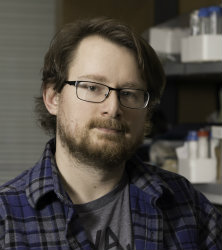
Supported Servers
Supporting Materials
- Tutorial: Proteogenomics 2: Database search
- Slides: Proteogenomics 2: Database search
- Video: Watch it on YouTube
- FAQ Document - Have a question about this training? Check here to see if it has already been answered
- Ask an instructor - Have question about the training? Did you run into a problem? Just wanna chat? Ask away on Slack! (Channel: #4-2_protegenomics )
- Finished the session? - Let us know that you've finished it, and what you thought of it! On Slack: (Channel: #4-2_protegenomics ). Thanks!
- Enjoyed it? - Like the video on YouTube, Tweet, and follow the GTN on Twitter! @gxytraining

Video Demo
Subtitles By: Subina Mehta
Description: In this demonstration, we will investigate the peptides that were identified during proteogenomics tutorial 2. We will identify the presence of novel proteoforms that are absent in the reference database, annotate the novel peptides and visualize them using the Multi-omics Visualization Platform (MVP). If you would like to view the results yourself, we provide example histories in the FAQ document
Supported Servers
Supporting Materials
- Tutorial: Proteogenomics 3: Novel peptide analysis
- Video: Watch it on YouTube
- FAQ Document - Have a question about this training? Check here to see if it has already been answered
- Ask an instructor - Have question about the training? Did you run into a problem? Just wanna chat? Ask away on Slack! (Channel: #4-2_protegenomics )
- Finished the session? - Let us know that you've finished it, and what you thought of it! On Slack: (Channel: #4-2_protegenomics ). Thanks!
- Enjoyed it? - Like the video on YouTube, Tweet, and follow the GTN on Twitter! @gxytraining

Video Tutorial
Subtitles By: Emma Leith
Description: In this tutorial, the basic workflow for metaproteomics is described, which includes database search, seeking taxonomy information and functional analysis. Related metaproteomics and functional microbiome tools and GTN tutorials are also mentioned in this tutorial.
Supported Servers
Supporting Materials
- Tutorial: Metaproteomics
- Video: Watch it on YouTube
- FAQ Document - Have a question about this training? Check here to see if it has already been answered
- Ask an instructor - Have question about the training? Did you run into a problem? Just wanna chat? Ask away on Slack! (Channel: #4-3_metaproteomics )
- Finished the session? - Let us know that you've finished it, and what you thought of it! On Slack: (Channel: #4-3_metaproteomics ). Thanks!
- Enjoyed it? - Like the video on YouTube, Tweet, and follow the GTN on Twitter! @gxytraining


Give us Feedback
Let us know what you thought about today!
What did you like? Suggestions for improvements? Spot a typo? Tell us about it!
- About the Materials? (slides, training manuals) use the feedback forms at the end of the tutorial
- About other things? - Let us know in Slack (channel #feedback )

Socialize with each other!
Join one of the social sessions
These include games, quizzes, discussions and more
Check out all channels in Slack starting with #social-
Want to organize something yourself? Tell us your idea and we will make a channel for it!

Meet the Galaxy Community!
Enjoying the course so far? Learn more about the Global Galaxy Community and how YOU can become part of it, by watching this video!
Choose Your Own Adventure!
Today YOU create the program. Below are set of suggested tutorials. Some have videos, some are self-study tutorials. All have experienced instructors online for support. Want to try something else from the GTN website? Also fine! We will do our best to help you with it.
Video Tutorials
Come say Hi in Slack! Let us know you are joining today and are getting started!

Icebreaker
Share one of your favorite books, tv shows, movies or games that you would recommend to others.
Post your answers in #social on Slack!
And of course please feel free to respond to anybody here, this channel is for socializing and getting to know each other :)
Note: Please do this every day if you would like to receive a certificate of attendance
Video Lecture
Subtitles By: Saskia Hiltemann
Description: Tuberculosis (TB) is an infectious disease caused by the bacterium Mycobacterium tuberculosis. According to the WHO, in 2018 there were 10.0 million new cases of TB worldwide and 1.4 million deaths due to the disease, making TB the world’s most deadly infectious disease.
Supporting Materials
- Slides: Variant Analysis: M. Tuberculosis Variant Analysis (Lecture)
- Video: Watch it on YouTube
- FAQ Document - Have a question about this training? Check here to see if it has already been answered
- Ask an instructor - Have question about the training? Did you run into a problem? Just wanna chat? Ask away on Slack! (Channel: #5-n_tuberculosis-variant-analysis )
- Finished the session? - Let us know that you've finished it, and what you thought of it! On Slack: (Channel: #5-n_tuberculosis-variant-analysis ). Thanks!
- Enjoyed it? - Like the video on YouTube, Tweet, and follow the GTN on Twitter! @gxytraining

Video Tutorial
Subtitles By: Peter van Heusden, Nadia Goué, Helena Rasche
Description: Tuberculosis (TB) is an infectious disease caused by the bacterium Mycobacterium tuberculosis. According to the WHO, in 2018 there were 10.0 million new cases of TB worldwide and 1.4 million deaths due to the disease, making TB the world’s most deadly infectious disease. Variation in the genome of M. tuberculosis (Mtb) is associated with changes in phenotype, for example drug resistance and virulence. It is also useful for outbreak investigation as the single nucleotide polymorphisms (SNPs) in a sample can be used to build a phylogeny.
Supported Servers
Supporting Materials
- Tutorial: Variant Analysis: M. Tuberculosis Variant Analysis (Hands-on!)
- Video: Watch it on YouTube
- FAQ Document - Have a question about this training? Check here to see if it has already been answered
- Ask an instructor - Have question about the training? Did you run into a problem? Just wanna chat? Ask away on Slack! (Channel: #5-n_tuberculosis-variant-analysis )
- Finished the session? - Let us know that you've finished it, and what you thought of it! On Slack: (Channel: #5-n_tuberculosis-variant-analysis ). Thanks!
- Enjoyed it? - Like the video on YouTube, Tweet, and follow the GTN on Twitter! @gxytraining

Video Lecture
Subtitles By: Saskia Hiltemann
Description: This lecture briefly introduces 16S sequencing, a popular technique used for taxonomic profiling of microbial communities.
Supported Servers
Supporting Materials
- Tutorial: Metagenomics: 16S Microbial Analysis with mothur (Lecture)
- Video: Watch it on YouTube
- FAQ Document - Have a question about this training? Check here to see if it has already been answered
- Ask an instructor - Have question about the training? Did you run into a problem? Just wanna chat? Ask away on Slack! (Channel: #5-b_16s-microbial-analysis )
- Finished the session? - Let us know that you've finished it, and what you thought of it! On Slack: (Channel: #5-b_16s-microbial-analysis ). Thanks!
- Enjoyed it? - Like the video on YouTube, Tweet, and follow the GTN on Twitter! @gxytraining

Video Tutorial
Subtitles By: Saskia Hiltemann
Description: In this tutorial you will perform the mothur MiSeq SOP (Standard Operating Procedure) in Galaxy.
Supported Servers
Supporting Materials
- Tutorial: Metagenomics: 16S Microbial Analysis with mothur (Hands-on!)
- Video: Watch it on YouTube
- FAQ Document - Have a question about this training? Check here to see if it has already been answered
- Ask an instructor - Have question about the training? Did you run into a problem? Just wanna chat? Ask away on Slack! (Channel: #5-b_16s-microbial-analysis )
- Finished the session? - Let us know that you've finished it, and what you thought of it! On Slack: (Channel: #5-b_16s-microbial-analysis ). Thanks!
- Enjoyed it? - Like the video on YouTube, Tweet, and follow the GTN on Twitter! @gxytraining

Video Demo
Subtitles By: Saskia Hiltemann
Description: This video will show you the full process of sequencing a bacterial genome using the Oxford Nanopore MinION sequencer.
Supporting Materials
- Video: Watch it on YouTube
- FAQ Document - Have a question about this training? Check here to see if it has already been answered
- Ask an instructor - Have question about the training? Did you run into a problem? Just wanna chat? Ask away on Slack! (Channel: #5-a_antibiotic-resistance-detection-nanopore )
- Finished the session? - Let us know that you've finished it, and what you thought of it! On Slack: (Channel: #5-a_antibiotic-resistance-detection-nanopore ). Thanks!
- Enjoyed it? - Like the video on YouTube, Tweet, and follow the GTN on Twitter! @gxytraining

Video Lecture
Subtitles By: Helena Rasche
Description: Nanopore Sequencing has many applications in a clinical setting. In this lecture, Astrid Heikema discusses how her group at the Erasmus Medical Center uses Nanopore for sequencing of bacterial Genomes.

Supported Servers
Supporting Materials
- Tutorial: Clinical Microbiomics: Nanopore Whole Bacterial Genome Sequencing
- Video: Watch it on YouTube
- FAQ Document - Have a question about this training? Check here to see if it has already been answered
- Ask an instructor - Have question about the training? Did you run into a problem? Just wanna chat? Ask away on Slack! (Channel: #5-a_antibiotic-resistance-detection-nanopore )
- Finished the session? - Let us know that you've finished it, and what you thought of it! On Slack: (Channel: #5-a_antibiotic-resistance-detection-nanopore ). Thanks!
- Enjoyed it? - Like the video on YouTube, Tweet, and follow the GTN on Twitter! @gxytraining

Video Tutorial
Subtitles By: Bérénice Batut
Description: This tutorial will guide you through the process of assembling your Nanopore-sequenced bacterial samples and determining the presence of antibiotic resistance genes.
Supporting Materials
- Tutorial: Metagenomics: Antibiotic Resistance Detection with Nanopore Data
- Video: Watch it on YouTube
- FAQ Document - Have a question about this training? Check here to see if it has already been answered
- Ask an instructor - Have question about the training? Did you run into a problem? Just wanna chat? Ask away on Slack! (Channel: #5-a_antibiotic-resistance-detection-nanopore )
- Finished the session? - Let us know that you've finished it, and what you thought of it! On Slack: (Channel: #5-a_antibiotic-resistance-detection-nanopore ). Thanks!
- Enjoyed it? - Like the video on YouTube, Tweet, and follow the GTN on Twitter! @gxytraining

Video Tutorial
Subtitles By: Mehmet Tekman
Description: This tutorial guides you through the preprocessing of sequencing data of bronchoalveolar lavage fluid (BALF) samples obtained from early COVID-19 patients in China. Since such samples are expected to be contaminated signficantly with human sequenced reads, the goal is to enrich the data for SARS-CoV-2 reads by identifying and discarding reads of human origin before trying to assemble the viral genome sequence.
Supported Servers
Supporting Materials
- Slides: Assembly: Unicycler assembly of SARS-CoV-2 genome
- Tutorial: Assembly: Unicycler assembly of SARS-CoV-2 genome
- Video: Watch it on YouTube
- FAQ Document - Have a question about this training? Check here to see if it has already been answered
- Ask an instructor - Have question about the training? Did you run into a problem? Just wanna chat? Ask away on Slack! (Channel: #5-h_unicycler-assembly-sars-cov2-genome )
- Finished the session? - Let us know that you've finished it, and what you thought of it! On Slack: (Channel: #5-h_unicycler-assembly-sars-cov2-genome ). Thanks!
- Enjoyed it? - Like the video on YouTube, Tweet, and follow the GTN on Twitter! @gxytraining

Video Lecture
Subtitles By: Anne Fouilloux
Description: Terrestrial ecosystem models have been widely used to study the impact of climate changes on vegetation and terrestrial biogeochemical cycles in climate modelling community. They are also more and more applied in ecological studies to help ecologists to better understand the processes. But the technical challenges are still too high for most of the ecologists to use them. This practical aims at familiarizing you (especially ecologists) with running a terrestrial ecosystem model (i.e., CLM-FATES) at site-level in Galaxy and analyzing the model results. Slides by Anne Fouilloux.
Supporting Materials
- Slides: Functionally Assembled Terrestrial Ecosystem Simulator (FATES)
- Video: Watch it on YouTube
- FAQ Document - Have a question about this training? Check here to see if it has already been answered
- Ask an instructor - Have question about the training? Did you run into a problem? Just wanna chat? Ask away on Slack! (Channel: #5-f_climate-fates )
- Finished the session? - Let us know that you've finished it, and what you thought of it! On Slack: (Channel: #5-f_climate-fates ). Thanks!
- Enjoyed it? - Like the video on YouTube, Tweet, and follow the GTN on Twitter! @gxytraining

Video Tutorial
Subtitles By: Sébastien Fouilloux
Description: Terrestrial ecosystem models have been widely used to study the impact of climate changes on vegetation and terrestrial biogeochemical cycles in climate modelling community. They are also more and more applied in ecological studies to help ecologists to better understand the processes. But the technical challenges are still too high for most of the ecologists to use them. This practical aims at familiarizing you (especially ecologists) with running a terrestrial ecosystem model (i.e., CLM-FATES) at site-level in Galaxy and analyzing the model results.
Supported Servers
Supporting Materials
- Tutorial: Functionally Assembled Terrestrial Ecosystem Simulator (FATES)
- Video: Watch it on YouTube
- FAQ Document - Have a question about this training? Check here to see if it has already been answered
- Ask an instructor - Have question about the training? Did you run into a problem? Just wanna chat? Ask away on Slack! (Channel: #5-f_climate-fates )
- Finished the session? - Let us know that you've finished it, and what you thought of it! On Slack: (Channel: #5-f_climate-fates ). Thanks!
- Enjoyed it? - Like the video on YouTube, Tweet, and follow the GTN on Twitter! @gxytraining

Video Lecture
Subtitles By: Assunta DeSanto, Saskia Hiltemann
Description: Circos is a popular tool for creating circular graphs to display genomic data. This video will introduce this tool and how to use it within Galaxy
Supported Servers
Supporting Materials
- Tutorial: Visualisation with Circos
- Video: Watch it on YouTube
- FAQ Document - Have a question about this training? Check here to see if it has already been answered
- Ask an instructor - Have question about the training? Did you run into a problem? Just wanna chat? Ask away on Slack! (Channel: #5-c_circos-visualisation )
- Finished the session? - Let us know that you've finished it, and what you thought of it! On Slack: (Channel: #5-c_circos-visualisation ). Thanks!
- Enjoyed it? - Like the video on YouTube, Tweet, and follow the GTN on Twitter! @gxytraining

Video Tutorial
Subtitles By: Beatriz Serrano-Solano, Helena Rasche, Saskia Hiltemann, Alireza Khanteymoori
Description: Circos is a popular tool for creating circular graphs to display genomic data. In this tutorial you will create a Circos plot for a cancer dataset
Supported Servers
Supporting Materials
- Tutorial: Visualisation with Circos
- Video: Watch it on YouTube
- FAQ Document - Have a question about this training? Check here to see if it has already been answered
- Ask an instructor - Have question about the training? Did you run into a problem? Just wanna chat? Ask away on Slack! (Channel: #5-c_circos-visualisation )
- Finished the session? - Let us know that you've finished it, and what you thought of it! On Slack: (Channel: #5-c_circos-visualisation ). Thanks!
- Enjoyed it? - Like the video on YouTube, Tweet, and follow the GTN on Twitter! @gxytraining

Video Lecture
Subtitles By: Anthony Bretaudeau
Description: Genome annotation is a multi-level process that includes prediction of protein-coding genes, as well as other functional genome units such as structural RNAs, tRNAs, small RNAs, pseudogenes, control regions, direct and inverted repeats, insertion sequences, transposons and other mobile elements.
Supporting Materials
- Tutorial: Genome Annotation: Annotation of a prokaryotic genome: Slides
- Video: Watch it on YouTube
- FAQ Document - Have a question about this training? Check here to see if it has already been answered
- Ask an instructor - Have question about the training? Did you run into a problem? Just wanna chat? Ask away on Slack! (Channel: #5-g_annotation-prokaryotic-genome )
- Finished the session? - Let us know that you've finished it, and what you thought of it! On Slack: (Channel: #5-g_annotation-prokaryotic-genome ). Thanks!
- Enjoyed it? - Like the video on YouTube, Tweet, and follow the GTN on Twitter! @gxytraining

Video Tutorial
Subtitles By: Anthony Bretaudeau
Description: In this tutorial we will use Prokka to annotate a draft genome sequence. Prokka finds and annotates features (both protein coding regions and RNA genes, i.e. tRNA, rRNA) present on on a sequence. Prokka can be used to annotate bacterial, archaeal and viral genomes quickly, generating standard output files in GenBank, EMBL and gff formats.
Supported Servers
Supporting Materials
- Tutorial: Genome Annotation: Annotation of a prokaryotic genome: Hands-on!
- Slides: Genome Annotation: Annotation of a prokaryotic genome: Hands-on!
- Video: Watch it on YouTube
- FAQ Document - Have a question about this training? Check here to see if it has already been answered
- Ask an instructor - Have question about the training? Did you run into a problem? Just wanna chat? Ask away on Slack! (Channel: #5-g_annotation-prokaryotic-genome )
- Finished the session? - Let us know that you've finished it, and what you thought of it! On Slack: (Channel: #5-g_annotation-prokaryotic-genome ). Thanks!
- Enjoyed it? - Like the video on YouTube, Tweet, and follow the GTN on Twitter! @gxytraining

Video Tutorial
Subtitles By: Florence Combes
Description: This tutorial covers an annotation pipeline for a protein list identified by LC-MS/MS experiments.
Supported Servers
Supporting Materials
- Tutorial: Annotating a protein list identified by LC-MS/MS experiments
- Video: Watch it on YouTube
- FAQ Document - Have a question about this training? Check here to see if it has already been answered
- Ask an instructor - Have question about the training? Did you run into a problem? Just wanna chat? Ask away on Slack! (Channel: #5-i_proteore-protein-list-annotation )
- Finished the session? - Let us know that you've finished it, and what you thought of it! On Slack: (Channel: #5-i_proteore-protein-list-annotation ). Thanks!
- Enjoyed it? - Like the video on YouTube, Tweet, and follow the GTN on Twitter! @gxytraining

Supported Tutorials (Self-Study)
These tutorials do not have videos, but experienced instructors will be online today to help you with them
Self-Study Tutorial
JBrowse is a popular Genome Browser. It can be used directly within Galaxy. You may have seen it in our Mapping tutorial on Day 1. This tutorial will go into more depth about JBrowse and how to use it to explore your genome.Supporting Materials
- Slides: JBrowse
- Tutorial: Genomic Data Visualization with JBrowse
- FAQ Document - Have a question about this training? Check here to see if it has already been answered
- Ask an instructor - Have question about the training? Did you run into a problem? Just wanna chat? Ask away on Slack! (Channel: #5-e_jbrowse )
- Finished the session? - Let us know that you've finished it, and what you thought of it! On Slack: (Channel: #5-e_jbrowse ). Thanks!
- Enjoyed it? - Like the video on YouTube, Tweet, and follow the GTN on Twitter! @gxytraining

Self-Study Tutorial
This tutorial aims to present the PAMPA Galaxy workflow, how to use it to compute common biodiversity metrics from species abundance data and analyse it through generalized linear (mixed) models (GLM and GLMM). This workflow made up of 5 tools will allow you to process temporal series data that include at least year, location and species sampled along with abundance value and, finally, generate article-ready data products.Supported Servers
Supporting Materials
- Tutorial: Compute and analyze biodiversity metrics with PAMPA toolsuite
- FAQ Document - Have a question about this training? Check here to see if it has already been answered
- Ask an instructor - Have question about the training? Did you run into a problem? Just wanna chat? Ask away on Slack! (Channel: #5-d_ecology_pampa-toolsuite )
- Finished the session? - Let us know that you've finished it, and what you thought of it! On Slack: (Channel: #5-d_ecology_pampa-toolsuite ). Thanks!
- Enjoyed it? - Like the video on YouTube, Tweet, and follow the GTN on Twitter! @gxytraining

Self-Study Tutorial
In many eukaryotic organisms, such as humans, the genome is tightly packed and organized with the help of nucleosomes (chromatin). A nucleosome is a complex formed by eight histone proteins that is wrapped with ~147bp of DNA. When the DNA is being actively transcribed into RNA, the DNA will be opened and loosened from the nucleosome complex. Many factors, such as the chromatin structure, the position of the nucleosomes, and histone modifications, play an important role in the organization and accessibility of the DNA. Consequently, these factors are also important for the activation and inactivation of genes. Assay for Transposase-Accessible Chromatin using sequencing (ATAC-Seq) is a method to investigate the accessibility of chromatin and thus a method to determine regulatory mechanisms of gene expression. The method can help identify promoter regions and potential enhancers and silencers.Supported Servers
Supporting Materials
- Tutorial: ATAC-Seq data analysis
- FAQ Document - Have a question about this training? Check here to see if it has already been answered
- Ask an instructor - Have question about the training? Did you run into a problem? Just wanna chat? Ask away on Slack! (Channel: #5-k_atac-seq )
- Finished the session? - Let us know that you've finished it, and what you thought of it! On Slack: (Channel: #5-k_atac-seq ). Thanks!
- Enjoyed it? - Like the video on YouTube, Tweet, and follow the GTN on Twitter! @gxytraining

Self-Study Tutorial
A biomarker is a measurable biological component that can be routinely detected in clinical practice and reflects a disease state, response to therapeutic treatment, or other relevant biological state. In this tutorial we introduce successively the tools of this pipeline, and guide you to execute them in order to complete the entire pipeline on a concrete example.Supported Servers
Supporting Materials
- Tutorial: Biomarker candidate identification
- FAQ Document - Have a question about this training? Check here to see if it has already been answered
- Ask an instructor - Have question about the training? Did you run into a problem? Just wanna chat? Ask away on Slack! (Channel: #5-j_proteore-biomarkers-discovery )
- Finished the session? - Let us know that you've finished it, and what you thought of it! On Slack: (Channel: #5-j_proteore-biomarkers-discovery ). Thanks!
- Enjoyed it? - Like the video on YouTube, Tweet, and follow the GTN on Twitter! @gxytraining

Self-Study Tutorial
Cheminformatics is the use of computational techniques and information about molecules to solve problems in chemistry. This involves a number of steps: retrieving data on chemical compounds, sorting data for properties which are of interest, and extracting new information. This tutorial will provide a brief overview of all of these, centered around protein-ligand docking, a molecular modelling technique.Supported Servers
Supporting Materials
- Tutorial: Protein-ligand docking
- FAQ Document - Have a question about this training? Check here to see if it has already been answered
- Ask an instructor - Have question about the training? Did you run into a problem? Just wanna chat? Ask away on Slack! (Channel: #5-m_cheminformatics )
- Finished the session? - Let us know that you've finished it, and what you thought of it! On Slack: (Channel: #5-m_cheminformatics ). Thanks!
- Enjoyed it? - Like the video on YouTube, Tweet, and follow the GTN on Twitter! @gxytraining

Self-Study Tutorial
Molecular dynamics (MD) is a method to simulate molecular motion by iterative application of Newton’s laws of motion. It is often applied to large biomolecules such as proteins or nucleic acids. This is a introductory guide to using GROMACS (Abraham et al. 2015) in Galaxy to prepare and perform molecular dynamics on a small protein. For the tutorial, we will perform our simulations on hen egg white lysozyme.Supported Servers
Supporting Materials
- Tutorial: Running molecular dynamics simulations using GROMACS
- FAQ Document - Have a question about this training? Check here to see if it has already been answered
- Ask an instructor - Have question about the training? Did you run into a problem? Just wanna chat? Ask away on Slack! (Channel: #5-m_cheminformatics )
- Finished the session? - Let us know that you've finished it, and what you thought of it! On Slack: (Channel: #5-m_cheminformatics ). Thanks!
- Enjoyed it? - Like the video on YouTube, Tweet, and follow the GTN on Twitter! @gxytraining

All other Tutorials
Please also feel free to explore all the other tutorials on the GTN website,
and do any that sound interesting to you. Our instructors will do their best
to support you in any of these tutorials.
All done?
Please feel free to hang around in Slack and talk to us and the rest of the Galaxy community! Thanks for joining!!

Give us Feedback
Let us know what you thought about today!
What did you like? Suggestions for improvements? Spot a typo? Tell us about it!
- About the Materials? (slides, training manuals) use the feedback forms at the end of the tutorial
- About other things? - Let us know in Slack (channel #feedback )

Socialize with each other!
Join one of the social sessions
These include games, quizzes, discussions and more
Check out all channels in Slack starting with #social-
Want to organize something yourself? Tell us your idea and we will make a channel for it!

Meet the Galaxy Community!
Enjoying the course so far? Learn more about the Global Galaxy Community and how YOU can become part of it, by watching this video!
Video Tutorial
Subtitles By: Saskia Hiltemann
Description: This short video gives an overview of the worldwide Galaxy community, and different ways you can get involved!
Supporting Materials
- GalaxyProject Home: galaxyproject.org
- Galaxy servers: Find a Galaxy server near you!
- Galaxy Training Network: Start learning Galaxy
- Support: Galaxy Help Forum
- Galaxy Publications: Zotero
- Galaxy Communities: Find and Join a community
- Events: Galaxy Event Horizon
- Mailing Lists: Stay informed of Galaxy activity!
- Galaxy Working Groups: Find and join a WG
- GitHub: galaxyproject
- Gitter Chat: Start talking with the Galaxy Community!
- GTN Gitter: Join the training discussion here!
- PaperCuts: Monthly Collaboration Fest
- GTN CoFest: Everybody Welcome!
- Twitter: follow @galaxyproject
- Twitter: follow the GTN @gxytraining
- Video: Watch it on YouTube
- Ask an instructor - Have question about the training? Did you run into a problem? Just wanna chat? Ask away on Slack!
- Finished the session? - Let us know that you've finished it, and what you thought of it! On Slack: . Thanks!
- Enjoyed it? - Like the video on YouTube, Tweet, and follow the GTN on Twitter! @gxytraining


Feedback Survey
Please take a moment to fill out this feedback survey . This helps use improve this event in the future.
Survey (~5 minutes): Click here!

Course Certificates
The deadline for requesting a certificate has passed, but we will organize similar events in the future.
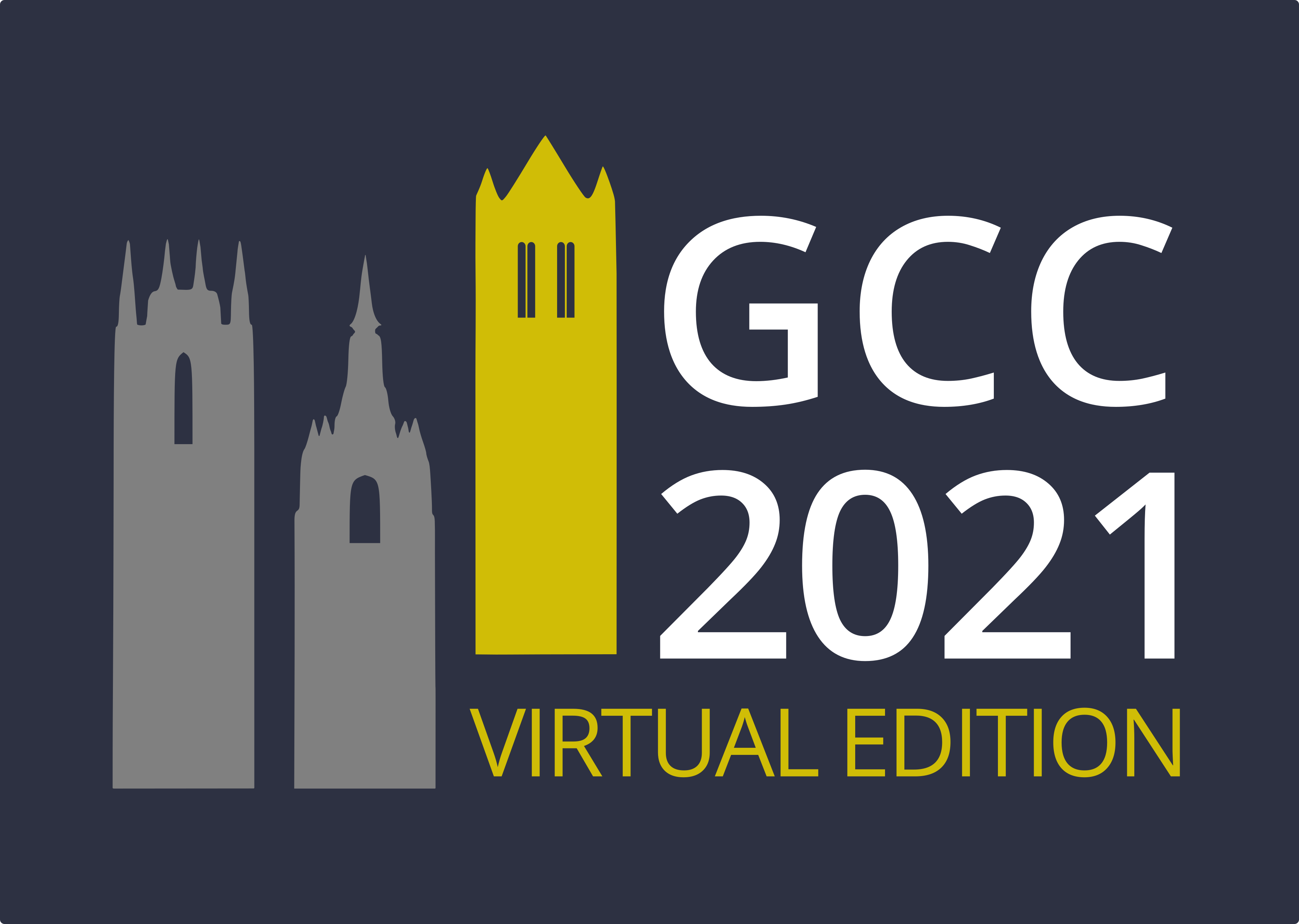
Want more training? Join the Galaxy Community Conference (GCC)!
GCC 2021 will be virtual this year, and feature a week of training.
More information can be found here: VIB GCC2021 Event Page
After the Course
All these materials will remain online, so you can continue working on them for as long as you want. The only difference will be that you should ask your questions on the GTN Gitter channel, instead of Slack.
Acknowledgements
This Global Galaxy course is only possible thanks to a Global network of instructors and institutes.
Presenters & Instructors & Facilitators & Community Caption Contributors
Institutions

